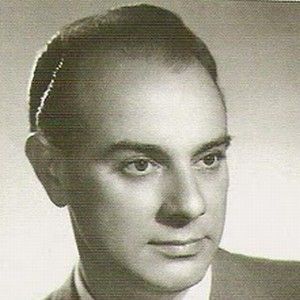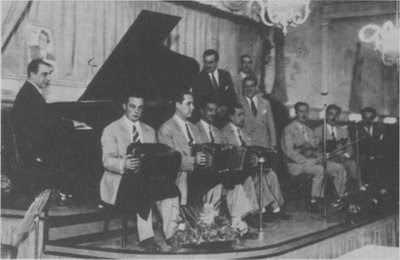“Arrabal” by Pedro Laurenz y su Orquesta Típica, 1937.
 Pedro Laurenz
Pedro Laurenz
Bandoneon player, director and composer
(10 October 1902 – 7 July 1972)
In 1937 he started recording for the Víctor company, and his version of “Arrabal” by the pianist José Pascual, is considered by some scholars, as the hinge of the newly born golden epoch of the tango which would reach the top in the 40s.
Read more at www.todotango.com…
Listen and buy:
 |
 |








